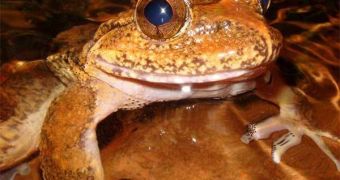The Indian Peninsula can be described as a “newcomer” to the Asian continent. It slammed into the region millions of years ago, after separating form a previous supercontinent and moving across the Indian Ocean. When it struck Asia, it triggered the formation of the Himalayas, as well as the creation of he Tibetan Plateau, but geologists are still unsure as to how the Peninsula moved before becoming affixed to Asia. Experts recently discovered that analyzing the migrations of species of frogs may provide them with additional information on how India moved atop the planet's mantle.
The collision between Asia and the peninsula began taking place between 15 and 55 million years ago, and is going on even as we speak. “Geologists know a lot about that area, but what they haven't been able to do is give a sequence to the timing of the rise of particular mountain masses and particular ridges and pieces. We use these frogs as a surrogate for a time machine,” explains University of California in Berkeley (UCB) herpetologist and evolutionary biologist David Wake.
He is also the coauthor of the new research paper accompanying the discovery which is published in the August 3 issue of the esteemed journal Proceedings of the National Academy of Sciences (PNAS). “What we have here is a group of very old frogs that are so fixed to their habitats that they just stuck there, sitting on that mountain mass when it got raised up. They were separated by these uplifts and by the rivers between the mountains into different units, and these give us a fix on the timing of geological events,” Wake adds. The targets of investigation in this new study were spiny frogs of the tribe Paini, which are commonly called stone frog in China.
The UCB team explains that tracking the development of the frogs from a genetic perspective allowed them to determine the area in which they evolved. “Basically, the frogs were rafting on top of the continents. The tectonics control morphological evolution by transporting originally very closely related frogs so far apart they all diverge and develop very differently,” explains geologist An Yin. The expert, who is based at the University of California in Los Angeles, was not involved in the new research, OurAmazingPlanet reports.

 14 DAY TRIAL //
14 DAY TRIAL //